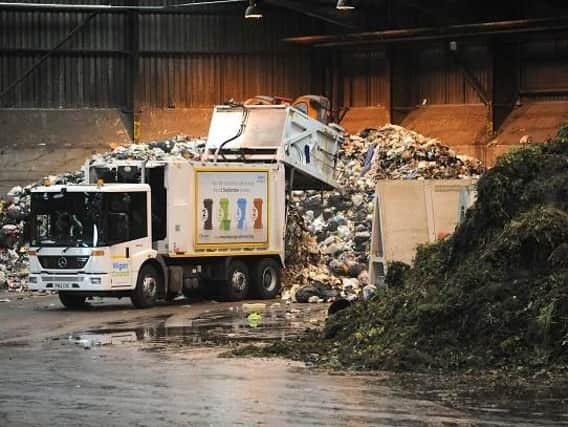Thousands of tons of Wigan waste goes up in smoke


The council has been forced to defend its work on waste and recycling after Government statistics showed 49 per cent of everything thrown away ended up in the furnace in 2016-17.
Of that, nine per cent was simply burnt with the rest of the incineration going to producing electricity.
Advertisement
Hide AdAdvertisement
Hide AdIn the same period 47 per cent was recycled, a slight drop from the 48 per cent rate recorded in 2014-15, while four per cent went to landfill
In the wake of these figures politicians are now warning about increasing use of incinerators, which could cause public health concerns, and expressing concern at stalling recycling rates.
However, the town hall was far more positive in its interpretation of the figures, hailing the low rate of rubbish ending up in landfill and saying the amount of waste being burnt is actually going down.
Paul Barton (above right), director for environment at Wigan Council, said: “We are working really hard to encourage our residents to recycle more, recycle right, which will reduce the amount of waste generated. Ultimately, this means the amount of waste going into landfill will reduce.
Advertisement
Hide AdAdvertisement
Hide Ad“With the support from our residents our recycling levels have increased and as a result only four per cent of the borough’s waste now goes into landfill.
“Although we do incinerate some of our waste, this is a better option than sending it to landfill as waste incineration supports the generation of electricity.
“And, thanks to the recent changes to our bin collections, the amount of residual waste being produced has reduced by 10,000 tonnes meaning that the amount of waste going for incineration has also reduced.
“Wigan Council is commited to reducing, re-using and recycling the borough’s waste and by working with residents through The Deal, we can have a positive impact on the environment and save money, meaning we can continue to invest in our essential front line services.”
Advertisement
Hide AdAdvertisement
Hide AdAround 67,884 tonnes of rubbish was recycled in Wigan in 2016-17, with the waste being made into new materials or composted to be turned into fertilisers. That means more than 70,000 tonnes wasn’t recycled and most of that went up in smoke.
Nationally the Government is aiming to recycle half of household waste by 2020 while cutting the proportion of rubbish going to landfill to 35 per cent.
The latest figures, however, led to calls from green organisations to do more, saying most of what is being thrown in furnaces could be recycled.
Shlomo Dowen (below right), national co-ordinator of the United Kingdom Without Incineration Network (UKWIN), said: “Across the UK there is more than 19 million tonnes of residual waste treatment capacity operational or under construction, but forecasts indicate that by 2030 there will only be around 10 million tonnes of residual waste available for treatment.
Advertisement
Hide AdAdvertisement
Hide Ad“This means that we are already facing an overcapacity of incineration that is harming recycling.
“Many councils are locked into long-term waste contracts that encourage the incineration of recyclable and compostable material. Some councils have already broken free of these waste contracts.
“We need central Government to help the other councils renegotiate or cancel these awful contracts.”
But Libby Forest from the Environmental Services Association said the increase in burning was actually a good thing.
Advertisement
Hide AdAdvertisement
Hide AdShe said: “Energy from waste has increased because we are successfully moving away from landfill, which is more damaging to the environment.
“Energy from waste saves 200kg of CO₂ per tonne of waste diverted from landfill, and generates low-carbon power far more efficiently than landfill, contributing to renewable energy targets and energy security.”